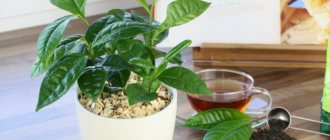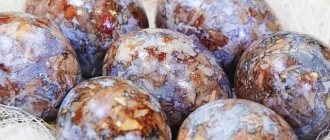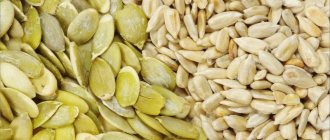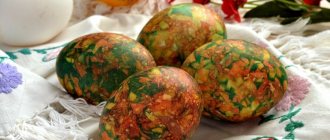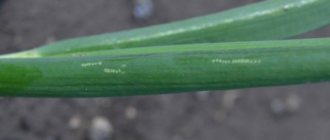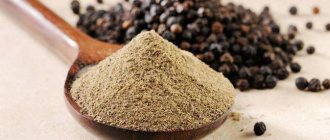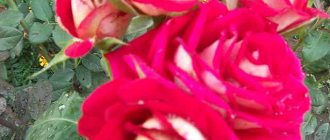Modern gardeners try to use inexpensive, but at the same time effective and environmentally friendly means in their practice to support the immunity of indoor plants and treat them from various diseases. Recently, the question has increasingly arisen: is it possible to water indoor flowers with an infusion of onion peels? Experts say that it is not only possible, but also necessary. However, it is important to know some rules and features of using this tool. In addition, it is not suitable for all plants.
What plants should not be watered with onion peels?
Despite the fact that onion peel contains a large number of microelements necessary for plants, and is also a natural fungicide and insecticide, it cannot be used for all indoor flowers.
The following plants should not be watered with a decoction of the husk:
Fertilizing these flowers with onion peels not only does not give a positive result, but also harms their growth and full development.
How is onion peel infusion useful for indoor plants?
Onion peels contain the components necessary for flowers:
- carotene;
- several groups of vitamins;
- phytoncides;
- a nicotinic acid.
Carotene acts as an antioxidant and allows plants to increase immunity to disease and improve endurance. In addition, this component leads to the destruction of pathogenic microflora, including fungi.
Phytoncides help destroy fungi and harmful bacteria in the soil. To prevent this component from evaporating, the husks must be filled with water.
Vitamin B1 reacts with phosphoric acid and forms carboxylase, a substance that plants need to process carbon and form nutrients.
Nicotinic acid promotes the processing of oxygen, sulfur, and nitrogen. It is simply necessary for indoor flowers in low light conditions. This component helps to grow and strengthen roots.
Dry application
Husks in any form are useful for the garden. In addition to decoctions and tinctures, the use of dry onion peels has always been successful. Collect peelings only from healthy bulbs, without lesions. Spread in a thin layer in a warm place and dry. Can be dried in a microwave or electric oven.
In the spring, when digging the beds, add onion peels. This will help get rid of pests in the soil - they do not like the smell of this vegetable.
To preserve the harvest, the dry mass of onion scales is also useful. Fruits (pears, apples) need to be placed in a container, layered with dry onion peels. For vegetables (radish, carrots), another storage method is suitable. Root vegetables need to be dipped in a solution of onion peels, dried and stored that way.
So, before you throw onion peelings into the trash, think about how much benefit they can bring you in the form of bumper harvests!
Onion peel infusion against pests
Thrips, aphids, mites and other pests often appear on indoor plants.
Thrips cannot be seen with the naked eye; only black dots or stripes are visible on the foliage. Pests secrete a characteristic sticky liquid, which causes sooty fungus to develop over time.
Spider mites weave flowers with barely noticeable webs.
To destroy pests, an infusion is used, which is prepared within 3 days from a liter jar of husks and 2 liters of water. After preparation, the liquid is decanted, liquid soap is added and diluted with water 2 times.
First, the leaves of the plants are wiped with the resulting composition, and then sprayed in such a way that the substance necessarily gets on the inside of the foliage.
Onion peels as fertilizer and disease prevention
If indoor flowers are rapidly losing their decorative qualities, then you should immediately water them with an infusion of onion peels.
How to prepare an infusion?
- A handful of husks must be poured with 1.5 liters of boiling water, placed on the stove and boiled for 5 minutes.
- After this, you need to remove the broth from the stove and leave for a couple of hours.
- Strain the finished product and cool.
Flower growers recommend spraying plant leaves and the top layer of soil with this decoction once a month. This procedure not only has an antiseptic effect, but also saturates the soil with essential microelements.
It should be remembered that this infusion is not suitable for storage; it should be prepared each time before use.
Onion organics for orchids
Unlike other flowers, orchids are capricious plants. But they, like everyone else, need nutrition. For these purposes, you can take onion peels, since all the nutritional elements are completely suitable for these flowers and will help destroy harmful microflora.
A little onion peel should be thrown into a liter of water, boiled, and cooled. Place the pot with the orchid in a wide bowl, pour the broth over the entire substrate until it is completely covered with liquid. Leave for about 15–20 minutes. Remove from the solution and leave in a warm place until the liquid drains and the roots dry slightly.
Preparation of fertilizers from onion peels
Dry onion “clothes” can not only be infused or used as a base for decoctions, but also embedded directly into the ground when planting indoor plants. This will disinfect the soil and increase the immunity of the flowers.
To ensure that the plants are not only healthy, but also enjoy lush flowering, they are fertilized with a decoction of the husk. It is prepared like this:
- Take 4 handfuls of raw materials and throw them into a metal bucket.
- Water is poured there, filling the bucket to the top, and put on fire.
- Boil the entire composition.
- After removing from the stove, leave to infuse for a day.
- Strain.
The resulting broth is diluted (1.5 liters per bucket of clean water) and poured over green pets.
A decoction and infusion of onion peels has the following properties:
This is extremely important for indoor flowers, which in the summer are moved to loggias and balconies, causing them to suffer from polluted street air.
Onion peel is an affordable and safe means for feeding indoor flowers, preventing diseases and repelling pests. However, it is worth remembering that not all types of plants can be watered with a decoction or infusion based on it - it can have a negative effect on some of them.
Onion is a vegetable that is very often used in preparing various dishes. Not everyone knows that onion peels, which are mostly thrown away, are an excellent fertilizer.
Husk decoction recipe
In order to prepare a decoction for indoor and country flowers, it is best to take both onion and garlic peels (the proportions are arbitrary, approximately 1:1). Two handfuls of raw materials are poured with three liters of hot water in an enamel pan, covered with a lid and boiled over very low heat for about 8 minutes. The composition, infused for two hours, is filtered, poured into a spray bottle and the flowers are given a kind of shower. It makes sense to water the soil with a decoction if midges have multiplied in the pots, there are other insects, or the soil is covered with mold (moss).
Water the ground with the broth for the purpose of preventive disinfection.
A decoction of garlic and onion peels is used for foliar feeding of plants once every few months (more often in summer, less often in winter).
More on the topic:
Eco-friendly garden pest control products
Biological methods of cabbage pest control
The fight against the Colorado potato beetle: “biological weapons”
Keep this method of disinfecting soil and treating indoor flowers in memory, so that if your green pets suddenly begin to wither for no reason, immediately use an effective remedy, especially since husks are always found in any kitchen in fairly large quantities.
The prepared decoction cannot be saved, since most of the active compounds are destroyed after a few hours, so prepare a portion of the liquid at a time. Peace to your home!
Author: Mila Nabogova
Photo: flickr.com
Onion peels can saturate the soil with environmentally friendly substances beneficial to plants and at the same time protect them from diseases and pests.
Onion peel as a fertilizer is economical, effective, safe and useful for vegetable and garden crops, as well as for house flowers. For these purposes, onion peel is used not only in its pure form, but as a raw material for infusions and decoctions.
Properties of onion peel
the biologically active it contains , including:
- B vitamins help strengthen seeds, seedlings and adult plants and fruits, accelerate their germination and growth,
- vitamins of the PP group (nicotinic acid) ensure the complete absorption of nitrogen and sulfur by plants, strengthening of oxidative processes in plants, normalization of the development of plants, their root system and fruits in any growing conditions;
- Vitamin E protects against rot and strengthens plants;
- carotene - thanks to its powerful antioxidant, nutritional, immunostimulating and disinfecting properties, it allows you to successfully fight plant diseases, achieve improved germination of seeds and seedlings, and in indoor, garden and garden plants it increases resistance to various diseases;
- quercetin, a known antioxidant with anti-inflammatory and antioxidant properties;
- microelements, including boron, iron, magnesium, manganese, copper, contribute to the resistance of garden and vegetable crops to diseases and increase their yield;
- phytoncides successfully fight plant diseases caused not only by microorganisms, but also by bacteria, rot and fungi.
Using onions in the garden
Today we will look at the beneficial properties of onion peels for:
- tomatoes;
- cucumbers;
- indoor flowers and more
Onion peels for tomatoes
Dry onion “skins” help increase the yield of tomatoes, strengthen the root system and stems, and protect against various types of diseases.
To use the nutritional and healing properties of the husk, it is used several times during the life of the plant.
For the first application, onion fertilizer is prepared in the first days after planting the seedlings. To prepare the nutritional composition, pour two glasses of husks into a liter of boiling water. To obtain working fertilizer, the infusion is kept for two days in a cool shaded or dark place.
To use the infusion is diluted with clean water in a ratio of one to three and half a liter is added to each young plant. For one-month-old plants, one and a half liters of solution is poured into the hole near the trunk. The effect of the fertilizer will appear after three to four days, when the tomato bushes become noticeably stronger and all the leaves turn green.
The second time the tomatoes are fed during flowering. In the evening, the infusion prepared as described above is poured under the roots of the bushes.
Thanks to this procedure, infection with fungus and rot is simultaneously prevented.
Regular watering is carried out the next day.
Onions for cucumbers
The first treatment is carried out by preparing the soil for planting cucumbers . To do this, the husk itself is crushed and added dry to the beds when they are first dug. You can also add the prepared decoction along with the boiled husks.
Proportions - three liters of husk and/or solution per square meter. Such pre- treatment of the beds will significantly reduce the risk of seedlings becoming infected with mold and rot.
The following processing and feeding is carried out when planting cucumber seeds using a strong decoction according to the above recipe. To protect and strengthen the plants throughout the entire growth period, the process is repeated several times, starting from the emergence of seedlings. The composition is prepared according to the recipe described above, watering the plants themselves and spraying the above-ground part.
Fertilizing plants with infusion of onion peels
The infusion will improve the soil structure, enrich it with microelements and nutrients. To prepare it, take a liter jar tightly filled with husks. Fill this volume with eight liters of boiling water.
This can be done in three stages if there is no suitable container. Cover the container with a lid and set aside for 24 hours. For direct treatment of plants and fertilizing, dilute the infusion at a rate of one to five. Water and spray plants, including zucchini, potatoes, cucumbers, peppers and tomatoes.
Feeding plants with a decoction of onion peels
A decoction is used to feed and process zucchini, including zucchini, potatoes, squash, pumpkin and the like. For use, it is most convenient to prepare a concentrated decoction in advance, which can be diluted for watering and spraying as needed.
To do this, take husks and clean water in the following proportions: one and a half to two liters of boiling water per glass of raw material. The mixture is brought to a boil and left to infuse and cool under the lid.
The resulting concentrate is poorly stored, losing its healing and nutritional properties, so it is recommended to use it immediately, diluting it as needed at the rate of two liters of concentrated decoction per ten liters of warm water (one standard galvanized bucket filled to the very top).
The resulting solution is used to treat the garden bed before planting vegetable crops, for example, carrots or tomatoes, and then water and/or spray the garden once every one to two weeks.
Using onions in caring for indoor flowers
At home, onions will successfully cope with the health improvement, protection and feeding of flowering and deciduous plants, except for succulents and plants with fleshy leaves, including aloe, cacti, fat plants and ficus.
To prepare fertilizer for house plants, brew a glass of husks with two liters of boiling water, boil for about five minutes over low heat and let cool, covering with a lid. It is useful to squeeze out the brewed husk and dig it into the soil to enrich it.
Dry onion peels can be introduced into the soil when preparing planting containers for indoor flowers and seedlings.
The prepared cooled decoction is watered and sprayed on the plants once or twice a week; this will strengthen the flowers and seedlings and protect them from damage by fungi, mold, bugs and rot.
Adviсe
Including dry crushed husks in the planting composition (3 liters per square meter), water the garden with ordinary water at room temperature. Using additional liquid fertilizer based on onion skins on fruit plants can change their taste.
As a preventive measure against pests, scatter the husks around the perimeter of the bed.
To preserve the freshness of the harvested crop and protect it from damage by pests, molds or rot, sprinkle the harvested fruits with dried onion peels.
Onion is a vegetable that is very often used in preparing various dishes. Not everyone knows that onion peels, which are mostly thrown away, are an excellent fertilizer.
Organic soil nutrition
Onion scales contain: carotene, vitamins, phytoncides.
It is believed that carotene has a very great life-giving power. It serves as an antioxidant for plants. It helps them increase endurance and resistance to various diseases. In addition, it kills harmful microorganisms, including fungi.
A large amount of phytoncides is concentrated in onion scales. They destroy the harmful environment that exists in the soil - fungi, bacteria. To use phytoncides without them “evaporating,” the scales are filled with water.
Onions contain a huge amount of vitamin B1. It reacts with phosphoric acid to create carboxylase. Sprouts need this substance for the degeneration of carbon and the production of nutrients.
The husk also contains nicotinic acid, which processes oxygen, nitrogen, and sulfur. Nicotine helps in low light conditions. It stimulates the formation of roots and strengthens them.
Feeding young seedlings by watering is very useful, since after the seedlings grow much faster, their stems become powerful and thick, and the leaves become stronger.
Onion peels as fertilizer
Try adding the husks that you collected over the winter to the soil during spring digging. You will increase your harvest.
We are constantly receiving letters in which amateur gardeners are worried that due to the cold summer this year there will be a poor harvest of potatoes, tomatoes, cucumbers, and other vegetables. Last year we published TIPS on this matter. But unfortunately, many did not listen, but some still applied. Here is a report from our reader, we would like to recommend biostimulants for plant growth that will help increase the yield by up to 50-70%.
We advise you to prepare in advance for the summer season, pay attention to this biological product. There are a lot of positive responses.
To prepare the recharge, you need to take a handful of onion scales, add 1.5 liters of water, put on fire, and wait 7 minutes after boiling. Cool afterwards. This fertilizer can be used to spray leaves, water the soil of indoor plants to prevent diseases, to prevent pests from appearing, and also feed the sprouts with the amount of nutrients they need. But we must not forget that you always need to prepare a fresh decoction, since it is not stored, but loses its beneficial properties and goes rotten.
Soil for feeding soil
You can also mix onion scales with soil when sowing seeds of various crops. Onion peels as a fertilizer have a bactericidal effect and improve the “immunity” of seedlings, which get sick much less and produce a larger harvest.
The use of onion scales for plant diseases
If you see that zucchini, zucchini, and cucumber seedlings have yellowed leaves. Then take 4 handfuls of onion peels, add a bucket of water (10 l), and boil. Let him insist. Then dilute 2 liters of the prepared mixture with a bucket of warm water and pour over the cucumber seedlings. Also use the mixture on yellowed sprouts of the pumpkin family. In addition, you can use this composition to feed tomato sprouts.
Source of healing quercetin
With improper care: excessive soil moisture, watering with cold water, poor ventilation, too much nitrogen fertilizer, and even sudden temperature changes, you can see how the base of the stem of indoor flowers and garden plants darkens, and then they fall. This means that a fungus has grown on the sprouts. This disease is called "black leg". Onion scales also help in this situation. Fill the husk with water and let it settle. Treat diseased plants 3 times, maintaining an interval of 6 days between treatments.
Using onion peels to control parasites
If you find thrips or spider mites on your indoor plants, the husk will definitely help. Thrips are tiny insects, they are absolutely impossible to see, you will only see black dots. If there are a lot of insects, then silvery and brownish stripes are visible on the leaves. These thrips secrete a sticky liquid that causes a disease called sooty fungus. Spider mites are very small insects whose bodies are covered with sparse bristles. When they appear, you may notice a slightly visible cobweb on the plants.
Antimicrobial agent
Take a liter jar of onion scales. Mix with 2 liters of warm water. Let it sit for 48 hours, then strain. Add liquid soap there. Dilute with water twice, wipe the leaves of the plants, and then spray them. It is necessary that the composition gets on the underside of the leaves.
Aphids can come in a variety of colors, the most common being green and black, but white, yellow, and brown can also appear. If you see a lot of aphids near flowers, then you need to react quickly. Fill a glass of husk with a bucket of warm water (10 l), let it sit for 15 hours. Treat sprouts affected by aphids with this mixture.
To prevent the appearance of pests in the greenhouse, place a bucket in which you make an infusion of onion scales. Spray the crops with a broom from time to time.
How to prepare a nutritious decoction for your favorite flowers?
Potato tubers can be placed in an infusion of onion scales before planting. Then the bushes will grow faster. They are less damaged by pests: wireworms and even the Colorado potato beetle. But for the Colorado potato beetle, you need to soak the tubers in an infusion that lasts for many days.
Properties and Application
To take advantage of all the beneficial properties of the husk, you must first carefully select the raw materials to obtain the fertilizer. Onion scales should be golden brown, without black or brown dull spots - these may indicate a fungal infection on the onion.
Decoctions
1 recipe
To prepare fertilizer from onion peels, a decoction is made from it. To do this, pour two liters of boiling water into a glass of onion peelings, bring to a boil, and after 4-5 minutes remove from the heat and leave until it cools completely. There is a slow release of all substances concentrated in the onion peel into the liquid.
It is not necessary to strain such a decoction; the soaked scales, once in the soil along with watering, will serve as a good mulching agent. The fact that they are saturated with water does not give reason to believe that they can somehow deteriorate or become moldy: there are still a lot of phytoncides and tanning substances left in them to prevent this.
2 recipe
This recipe is suitable not only for watering and fertilizing, but also for spraying garden crops or indoor plants.
Fill a glass of husk with 2 liters of water, bring to a boil, remove from heat and wrap well so that cooling occurs as slowly as possible. You can also use a thermos for this purpose, the effect will be even more noticeable.
After cooling, when the broth acquires a dark brown color, it is diluted in a bucket of water, and in this form the plants are sprayed or watered, but not more than twice a month - the product is very strong and rich.
Recipe 3
For those who do not want to bother themselves with boiling or other manipulations. It is enough to simply scatter the husks among the beds, sprinkle them with soil, then water them with plain water over and over again. Once wet, the husk will gradually release beneficial substances into the soil and plant roots.
Husk infusions
Their difference from decoctions is that for preparation you do not need to heat and boil water; just pour cold water over the husks. True, the readiness time of the solution is extended - up to 4-5 days.
Recipe 1
For spraying fruit and berry bushes, fruit trees.
A glass of husk is poured into a bucket of cold water and placed in a warm place (room temperature) for four days. After infusion, strain and spray the crowns with a fine stream. Husks from the infusion, as well as from the decoction, can be used as mulch.
Recipe 2
It will require much more husk - half a bucket. This number of scales is poured with hot water to the brim and left to infuse for 2 days. After straining, spray the plants if they have aphids or other pests. The product will not only get rid of insects and other pests, but spraying with it will serve as a preventive measure against fungi and mites.
Recipe 3
For preventive spraying against laid insect eggs and larvae hatched from them.
A glass of husks and 20 grams of onions are poured with a liter of boiling water, left under a closed lid for at least 9 hours, after filtering, the leaves and stems of the plants are sprayed.
Finely grated soap shavings are added to any spraying compositions based on onion peels, unless they are also used for watering at the same time, for better adhesion to plants.
Onion peel mulch
It serves not only as a means of mulching, but also as a therapeutic and prophylactic substrate (not a single insect can tolerate the smell of onion derivatives), as a fertilizer - as the husk soaks in moist soil, it begins to release all the useful substances stored in it.
It is advisable to apply it to the ground a few days before planting the plants in the ground. To do this, the husks are scattered over the surface of the beds, choosing a windless day. They quickly dig it up with soil, water it a little so that the process of releasing the necessary substances from their husks into the soil begins, and after 2-3 days they plant seedlings or sow seeds.
Fertilizer for house flowers
Caring for plants at home requires even more time and money than growing in the garden. After all, the conditions at home for flowering or decorative deciduous species are not ideal.
It is too dry from the radiators, there is often not enough light - if the windows face north or east. Or there is too much light - if the windows face south. But most exotic plants come from humid jungles, so the conditions for keeping them must be brought closer to natural ones.
Oddly enough, onion peels will help create such conditions. The jungle soil, strewn with dead leaves, branches and fruits, is similar in composition to that which is formed after adding onion peels to it! The same flavonoids, substances formed during decomposition and fermentation, the same tanning properties of mulch.
When feeding indoor crops, you cannot use onion decoctions or infusions for succulents, ficuses and fat plants: instead of developing, they may die. The extracts released from onion peels are completely uncharacteristic of the sands or rocky wastelands of deserts, semi-deserts and dry savannas where these plants live!
To prepare an infusion for the purpose of feeding indoor plants, a multi-layered husk from two large onions of a dark, golden brown color is sufficient. If the color of the husk is light, it is taken from 3-4 onions.
The husk is poured with a liter of boiling water, left for 3-4 days, and plants with signs of wilting or those that have stopped growing are watered first. Usually after 2-3 weeks the plants come to life, begin to grow, and new shoots or buds appear on them.
This infusion is used as a top dressing no more than once every 3-4 weeks - the concentration of nutrients in it is such that the soil can be “overfed”, and the roots of the plants will get burned.
Whether in the garden, in the vegetable garden...
You don’t need to think that feeding from onion peels is some kind of outdated folk remedy. Agronomists will also recommend it to you.
Onion peels for cucumbers
The scourge of cucumber plantings is all kinds of rot. To prevent this disease or treat it, it is enough to spray the green part of the plants from top to bottom once every 2-3 weeks with a solution obtained from an infusion of 400 g of husks and 2 liters of boiling water, kept for 2 days. The solution is prepared by diluting the resulting amount of infusion with water 1 to 1. Add boiled, water-swollen skins to the soil as mulch.
If the husk is added to the soil in dry form, then the concentration of substances reaching the roots after watering will be such that spraying of cucumber plantings will not be required.
For tomatoes
Tomatoes are fertilized with infusions or decoctions of the husks no more than 2 times a month. Fertilizing should be done only in the evening, and the first one should be done on the day of planting the seedlings. The difference between a feeding solution and a cucumber solution is that the infusion or decoction is diluted with water in a ratio of 1:2. And the tomatoes are not sprayed with it, but rather watered. Root feeding, about half a liter of solution is spent on each bush. The dosage is gradually increased so that by the time the fruit begins to ripen, about 2 liters of diluted working solution are pouring under the bush.
For pumpkin, potatoes, radishes
The preparation is the same as for cucumbers. The infusion is used as a vitamin, nutritious and as a preventative against rot, powdery mildew and against insects. Radishes can be watered by sprinkler irrigation. When the tops are processed and the solution drains, being absorbed into the ground.
For seedlings
Young plants, especially at the very beginning of the growing season, require a lot of high-quality nutrition to maintain strength. For seedlings, it is advisable to use not infusions or decoctions, but dry onion peels scattered in the beds and dug up with the ground. If a decoction or infusion is used, then it is not applied to the soil everywhere, but rather poured into each hole where seedlings are planted.
After planting the plants, when they have already taken root, you can also spray with a solution of the same concentration that was used for watering - this will serve as a good preventative against pests.
Potato peels
To feed the potatoes, you need to mix a tightly filled glass of onion peelings with three liters of boiling water. Leave for two days. Before use, strain and add water in a ratio of 1:2.
Watering under each bush is not very abundant; this is still fertilizer, and not watering the soil. For fairly mature plants, you can prepare a more concentrated solution. This feeding will give vitality to vegetables and prevent the development of putrefactive processes.
Tomatoes, pumpkins and zucchini should be watered in the same way.
You can use onion peels to feed potatoes.
Onion peels from infections and pests
For aphids, caterpillars, moths, spider mites, cabbage butterflies and weevils, make a remedy according to the following recipe:
- Onion peels - liter jar.
- Boiling water – 1 liter.
Pour, cover with a lid, leave for 5 days. Then strain, dilute the resulting infusion with water in a ratio of 1: 2, add finely grated laundry soap, give it time to completely dissolve and water with the resulting planting agent for at least 3 days in a row.
Remedy for blackleg
- Husk – 2 handfuls
- Boiling water – 1 liter
Leave for 24 hours, strain, and apply as a spray.
Against bacteriosis of cabbage and radish
The composition is the same as for the black leg. At the first sign of yellowing of the leaves, treat the entire plant, from crown to root.
Against bacterial cancer
A tomato disease that can destroy the entire crop. Spray the green parts of plants with onion infusion or decoction after flowering until the first ripe fruits appear. Unlike chemical means of combating pathologies, spraying husk solutions is absolutely harmless.
The specific substances contained in onion peels will repel not only insects such as the Colorado potato beetle, codling moth, copperhead, click beetles, wireworms, slugs and cruciferous flea beetle from crops grown in gardens. As well as some rodents (moles and voles) and birds (thrushes, crows, magpies).
What can be treated with organic infusion?
Since this is a natural component, it can be used everywhere:
- water and spray the bushes and trees in the garden;
- All vegetables are processed in the garden;
- fertilize flower beds;
- At home and on the balcony they are used for potted plants.
By spraying fruit and berry crops and vegetables, they fight against insects that harm them. The husk effectively helps in protecting the garden and vegetable garden from such enemies:
- Colorado potato beetle;
- tick;
- aphids;
- codling moth;
Onion peels work well against aphids
- cabbages;
- caterpillars;
- bear
But it’s not just spraying the plants that gives results. Many summer residents successfully use watering the soil with a decoction of onion peels in their gardens. This helps to enrich the soil with nutritious ingredients, and at the same time get rid of harmful insects in it.

